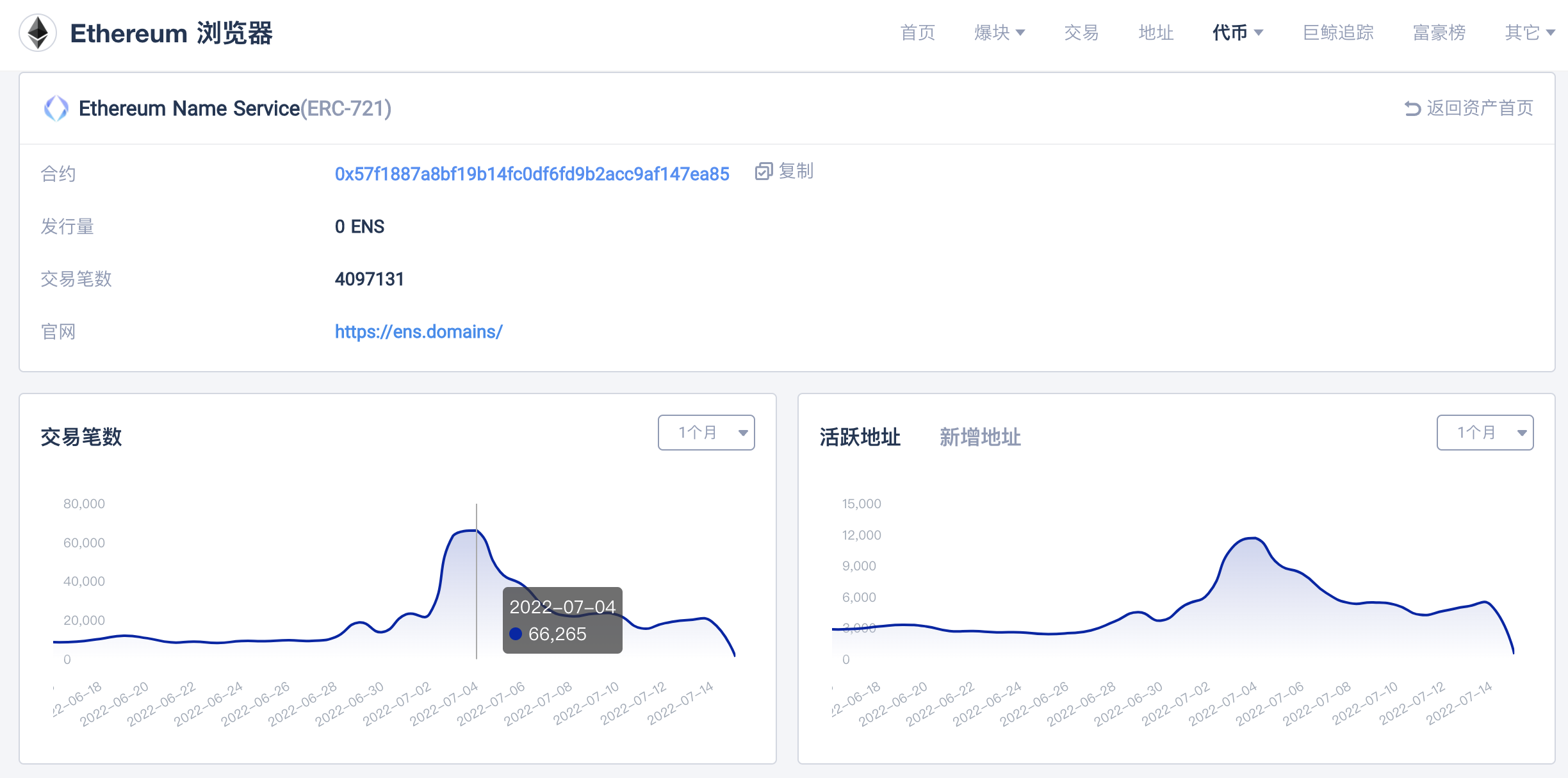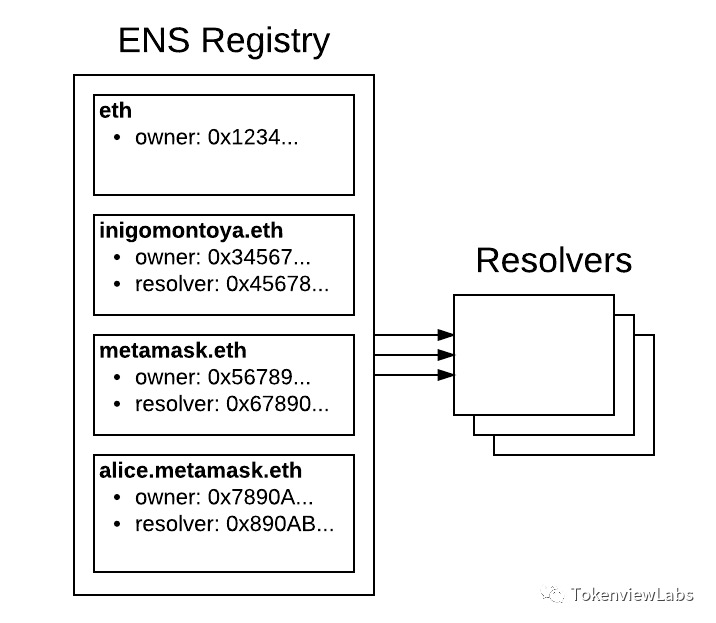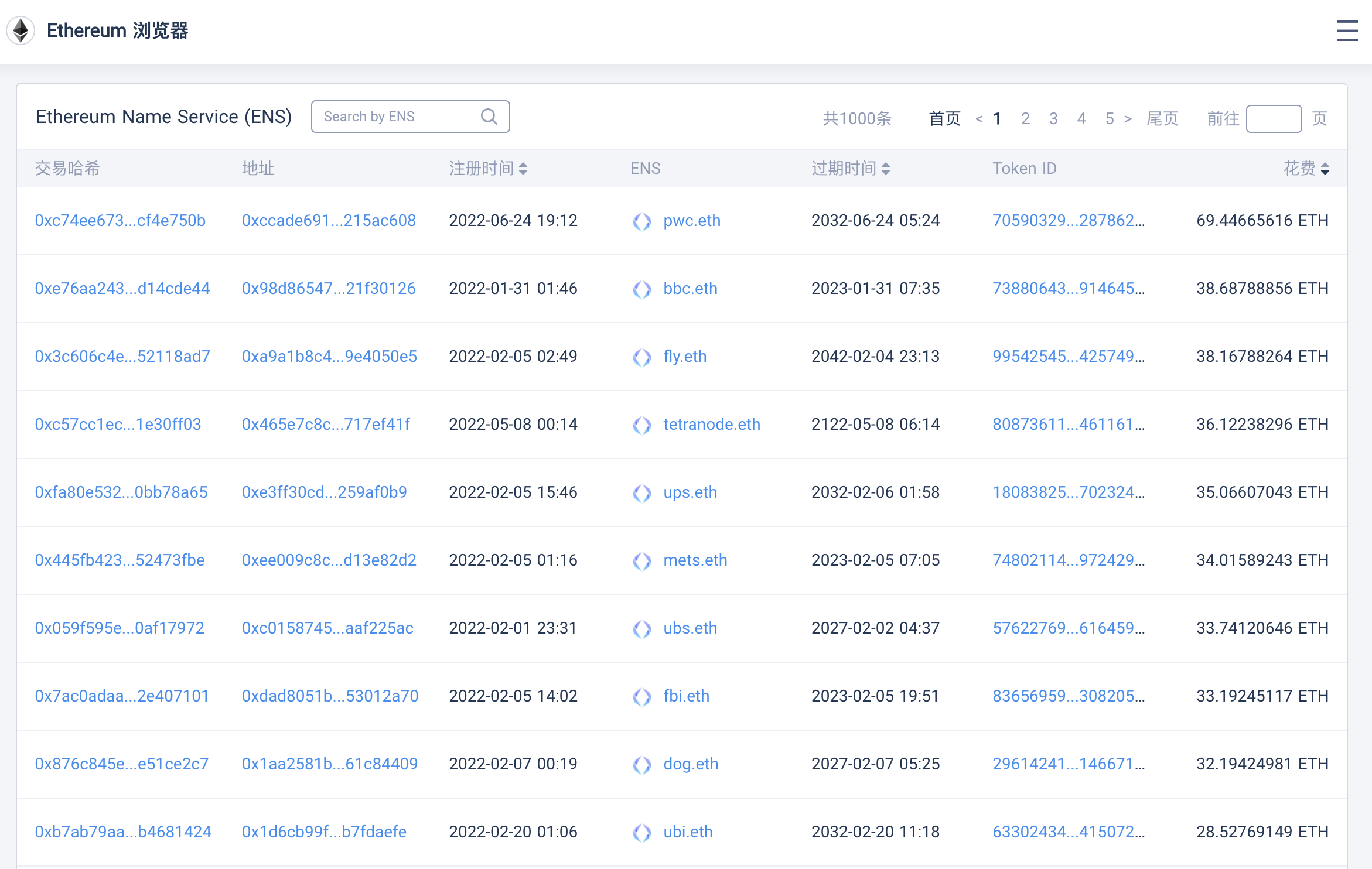Web3 profile? Comprehensive analysis of Ethereum name service ENS | Tokenview
Ethereum Name Service Transaction Volume Soars
In July, the transaction volume of Ethereum Name Service (ENS) saw a significant surge. On July 3rd and 4th alone, the number of transactions surpassed 66,000, reaching a new high in nearly two months. In the cool market environment, an ENS frenzy has emerged.The ENS domain '000.eth' was sold for a price of 300 ETH (approximately $320,000), ranking as the second-highest transaction price for ENS domains. The ENS domain '٠٠٠.eth' was sold for 100 ETH (approximately $115,000), securing the fifth position in the list of highest ENS domain transaction prices.

The ENS domain market continues to be lively. Based on the trading records on Opensea, the recently popular domains are those with 3-5 characters. Due to the non-fungible nature of ENS domains, each domain can be considered as an NFT. In the Web3 world, using ENS as a 'profile' seems to have become a standard for Web3 enthusiasts.
What is Ethereum Name Service?
In the early days of the Internet, one of the core problems faced by computer scientists was that domain names and Internet Protocol addresses could not match, which was not very friendly to ordinary users.
This means that if you want to access a website, you need to enter the full IP address of the website you want to access, such as 54.235.191.121. Since an IP address is just a long, hard-to-remember string of numbers and dots, this makes browsing the web difficult.
However, American computer scientist Paul Mockapetris developed the Domain Name System (DNS) in 1983, following cutting-edge research conducted by American scientist Elizabeth Feinler in the 1970s.
DNS matches IP addresses to friendly domain names. For example, instead of typing in a long list of numbers and dots, users can simply type Tokenview.com into the search bar and be directed to the website.
Current cryptocurrencies still mostly use a system similar to the old IP address setup. If you wanted to send Bitcoins from your wallet to someone else's address, you would have to enter that person's wallet address, a long string of numbers and letters, rather than something as convenient as the wallet owner's name. This is an important reason for the birth of Ethereum Name Service.
The Ethereum Name Service (ENS) is a distributed, open and extensible naming system that interacts with the Ethereum blockchain. Similar to the role of DNS mentioned above, the role of ENS is to convert a machine-readable name such as the wallet address '8g978dl39ji9xl' into a human-readable name 'Tokenview.eth'.
Through ENS, users can purchase and manage their own domain names, which means secure and decentralized transactions can be conducted without having to deal with long and complex addresses. It also reduces the chances of making any mistakes while entering the recipient address to send funds.
Now, ENS may sound the same as the DNS system developed in the 1980s, but its architecture is very different. Like DNS, ENS uses a hierarchical name system called domains, where the creator and owner of a domain has control over its top-level domain and subsequent subdomains.
How does ENS work?

Register
First, all domain names recorded in ENS have an owner. The owner owns a named domain and may transfer the name to a new owner at his or her discretion.
The owner who wishes to purchase a domain is called the 'registrant' because he must register the domain on ENS. Recording, monitoring and tracking who registers a domain name (the registrar) is undertaken by a feature of ENS called the Registry. The 'Registrar' is the smart contract that allocates subdomain names and is managed by a master registrar called the Permanent Registrar. They can be changed at any point or at any level in ENS, and can be referenced by the owner of the registry.
The registrant can also transfer his domain registration to another given account. Furthermore, if an individual wishes to restore a given domain name, he can do so by reclaiming the name and domain. This will reset the ownership of the ENS name to the registrar that has reclaimed the given account.
Name
As mentioned above, there is a difference between having a name and having a registration. A 'name' is a way for ENS to identify a given domain, such as 'Tokenview.eth', and can consist of different labels separated by punctuation.
The algorithm used to process domain names registered on ENS is called 'namehash'. namehash works because on ENS systems, replacing well-known names, this feature only works with 256-bit cryptographic hashes of limited length. You can use name hashing if you wish to derive a hash from the name and still preserve the hierarchical properties of the domain.
For example, for 'Tokenview.eth', the namehash is 0x787192fc5378cc32aa. Representing names in this way is unique to ENS.
Now, before namehash can work, names must first be normalized, meaning uppercase and lowercase names are treated equally. This is important because the namehash process ensures that all users get the same view of the names and domains available on ENS.
So the question is, how to check the ENS registration details? Browsers like Tokenview provide a dedicated ENS function section:https://eth.tokenview.io/cn/ens
Directly enter the domain name you are interested in or want to purchase, and you can view information such as its current owner's address, registration time, expiration time, and cost. The current TokenID with the highest registration cost for ENS is pwc.eth, which costs 69.44ETH.

Why is ENS important?
Because ENS was developed for Ethereum smart contracts and is the system most closely aligned with the Ethereum ecosystem, it does not suffer from the same security issues as the DNS system---DNS records domain names and names and stores them on a central server , which means they are vulnerable to hackers.
For example, in October 2020, Google's threat analysis team monitored a record 180,000 attacks against DNS and other network targets launched by Chinese Internet service providers. In contrast, ENS records cannot be destroyed and are protected by the Ethereum blockchain.
Additionally, with ENS, names and addresses become more transparent and easier to interact with. Anyone can create or register a “.eth” domain name by participating in the auction process. The highest bid will win the domain, allowing the winner to create subdomains as well as lease the domain.
This provides users on the Ethereum blockchain with a unique opportunity to purchase and create domain names on the Ethereum network and become a clear point of contact among the vast number of addresses.

 APIs
APIs


 Back
Back


